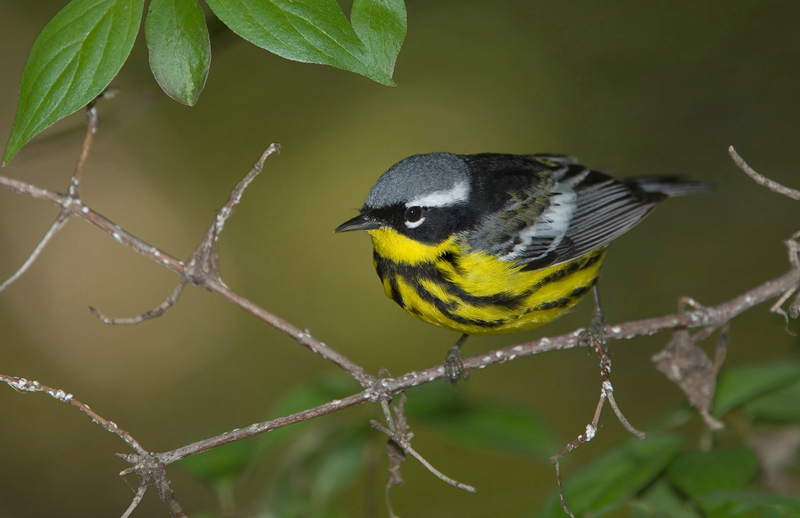
Green-tailed Warbler, Yellow-breasted Chat, and White-winged Warbler are other species where there have been questions as to whether they should be considered as warblers or tanagers. This steely gray and yellow songbird is sometimes called the 'necklaced warbler' thanks to the bold black necklace that it. It is one of the last warblers to arrive north in the spring, and one of the first to leave in the fall to return to its South American wintering grounds. Currently, the conebills are normally placed in Thraupidae and the Bananaquit in its own family. A colorful, energetic warbler of northern forests, the Canada Warbler spends little time on its breeding grounds. The New World warblers are closely related to the tanagers, and some species like the conebills Conirostrum and the Bananaquit have been placed into either group by different authorities. There are a number of issues in the taxonomy and systematics of the Parulidae. Bold type are birds I have photographed: BLUE-WINGED WARBLER, GOLDEN-WINGED WARBLER. The family name, of course, derives from that genus. The New World Warblers Gallery consist of thirty-seven (37) species. The scientific name for the family, Parulidae, originates from the fact that Linnaeus in 1758 named the Northern Parula as a tit, Parus americanus, and, as taxonomy developed, the genus name was modified first to Parulus and then the current Parula. In contrast, two eggs is typical for many tropical species, since the chicks can be provided with better care, and the adults are likely to have further opportunities for reproduction. The migratory species tend to lay larger clutches of eggs, typically up to six, since the hazards of their journeys mean that many individuals will have only one chance to breed. Since this may not be parulid, the Parkesia waterthrushes, the Ovenbird, the Russet-crowned Warbler and Semper's Warbler, all of which can exceed 15 cm (6 in) and 21 grams, could be considered the largest. Traditionally, it was listed as Yellow-breasted Chat, at 18.2 cm (7.2 in). The largest species depends upon the true taxonomy of the family. The smallest species is the Lucy's Warbler ( Oreothlypis luciae), at about 6.5 grams and 10.6 cm (4.2 in). New World warbler Bird Eurasian golden oriole American yellow warbler, Bird, animals, songbird png 628圆00px 635.31KB Wild Bird Care Centre Common starling. The Granatellus chats also show sexual dimorphism, but due to recent genetic work have been moved into the family Cardinalidae (New World buntings and cardinals).Īll the warblers are fairly small. 
The Parkesia waterthrushes and Ovenbird are strongly migratory, but have identical male and female plumage, whereas the mainly tropical and sedentary yellowthroats are dimorphic. In contrast, resident tropical species, which pair for life, show little if any sexual dimorphism.

This tendency is particularly marked in the large genus Dendroica. Many migratory species, particularly those breeding further north, have distinctive male plumage at least in the breeding season, since males need to reclaim territory and advertise for mates each year.

Two genera, Myioborus and Basileuterus seem to have colonised South America early, perhaps before the two continents were linked, and provide most warbler species of that region. From thence they spread north during the interglacial periods, mainly as migrants, returning to the ancestral region in winter. It is likely that this group originated in northern Central America, which remains with the greatest diversity and numbers of species. Most members of this family are insectivores. Most are arboreal, but some, like the Ovenbird and the two waterthrushes, are more terrestrial.

They are not related to the Old World warblers (Sylviidae) or the Australian warblers. Most species are highly territorial and even some migratory species, such as the American Redstart, will also defend a territory on their wintering grounds.Įvery year, a few individuals (mostly of species that migrate through eastern North America) are blown off-course and end up in western Europe.The New World warblers or wood-warblers are a group of small, often colorful, passerine birds restricted to the New World. Some species are found amongst the treetops, such as the hyper-active, zebra striped Black-and-White Warbler, while others, such as the Ovenbird, prefer to skulk in dense vegetation near the ground. These similarities arise from convergent evolution, both groups flit amongst vegetation looking for insects.
#NEW WORLD WARBLERS FULL#
The American wood warblers are similar in in size, shape and habits to the old world warblers, to which they are not at all related, though they are generally rather more colourful, particularly the males in full breeding plumage.








 0 kommentar(er)
0 kommentar(er)
